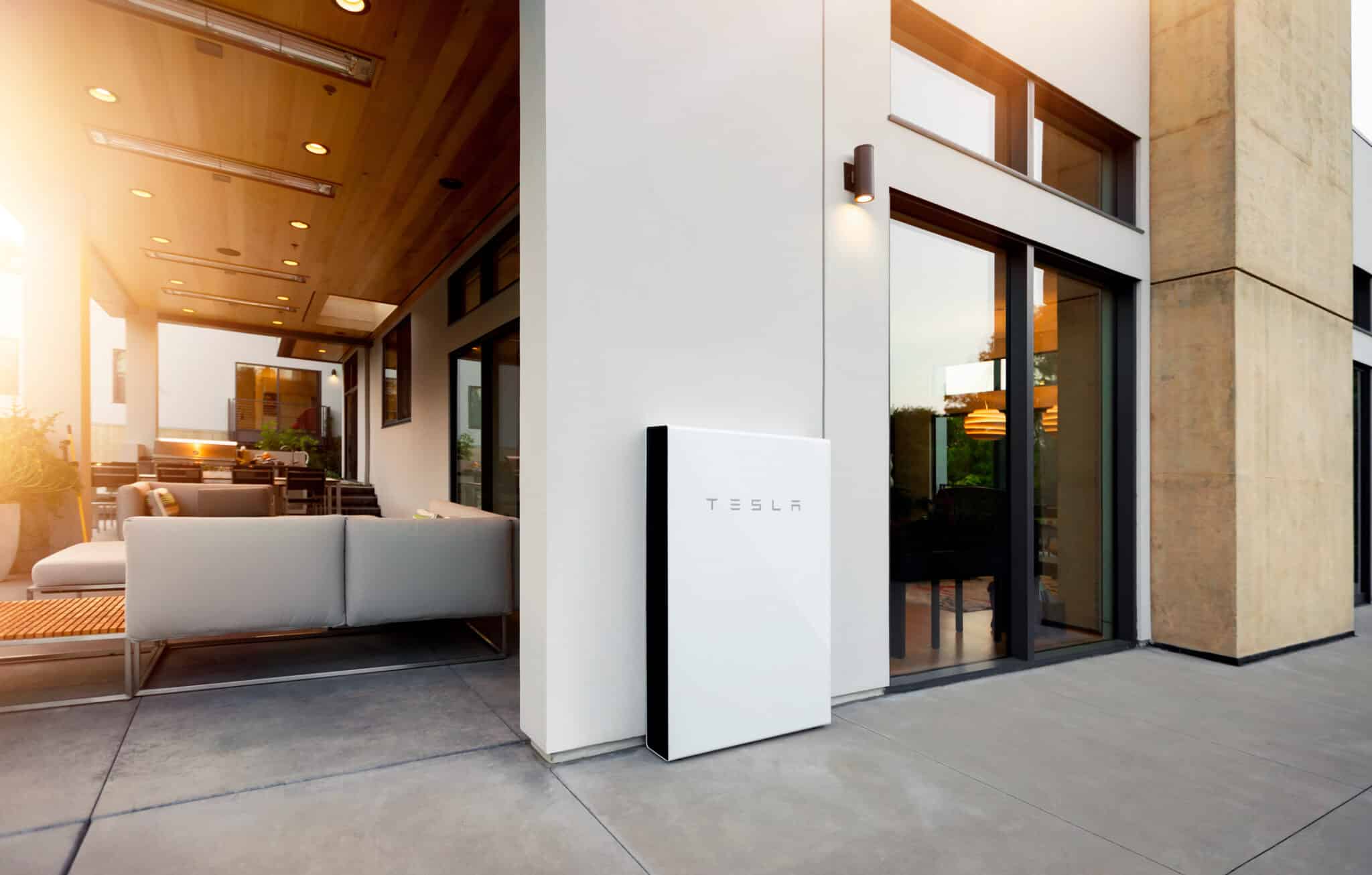What is the Difference Between Peak and Continuous Power in Batteries
How Much Does the Tesla Powerwall Cost?
 The Tesla Powerwall has a higher price than many other battery systems, but you also get a high storage capacity and power output. The price is calculated based on how many units you order: a single Powerwall sells for $10,500, but two units will cost $17,000 ($8,500 each). They can be purchased directly from Tesla, but you can also get them from third-party providers and solar installers local to your area.
The Tesla Powerwall has a higher price than many other battery systems, but you also get a high storage capacity and power output. The price is calculated based on how many units you order: a single Powerwall sells for $10,500, but two units will cost $17,000 ($8,500 each). They can be purchased directly from Tesla, but you can also get them from third-party providers and solar installers local to your area.
Powerwalls and other battery systems qualify for the 30% federal solar tax credit, which effectively reduces the price of a single unit to $7,350 (down from $10,500). However, you must meet some requirements to be eligible:
- The Powerwall must be used with solar panels (or another renewable energy system) to get credit. In other words, a stand-alone unit that only pulls charge from the grid does not qualify.
- If you're using the Powerwall in a home, it must get 100% of its charge from solar panels.
- If you're using it in a business, it must get at least 75% of its charge from solar panels.
Depending on where you live, there may be additional solar tax exemptions or other financial incentives from your state government or utility company. Before installing a Tesla Powerwall, look for information about local incentives and their eligibility requirements. If you're interested in buying a Powerwall, there are a few additional things to keep in mind:
- Since the Powerwall has become very popular, there are often long wait times to get products in after ordering them.
- Tesla is no longer selling Powerwalls individually — they can only be purchased with new Tesla Solar Roof shingle or panel installations.
- If you want to add a Powerwall to an existing solar array, or you want to use solar panels and inverters from another manufacturer, you will need to contact a third-party provider.
What is the Tesla Powerwall?
 Made by the same company that is famous for electric vehicles (EVs), the Tesla Powerwall is a lithium-ion battery that's most often associated with stored energy generated by Tesla solar panels. However, you can actually charge these batteries with any electricity source to use as a backup during a power outage. You can also connect up to 10 Powerwall units as a single energy storage system, making them a viable energy storage solution for small and medium businesses as well as homes.
Made by the same company that is famous for electric vehicles (EVs), the Tesla Powerwall is a lithium-ion battery that's most often associated with stored energy generated by Tesla solar panels. However, you can actually charge these batteries with any electricity source to use as a backup during a power outage. You can also connect up to 10 Powerwall units as a single energy storage system, making them a viable energy storage solution for small and medium businesses as well as homes.
You can currently purchase a Tesla Powerwall 2 or Powerwall+. The Powerwall 1 has been discontinued since 2016, but the newer versions are much better products: a single Powerwall 2 or Powerwall+ can store 13.5 kilowatt-hours of power, while the Powerwall 1 only had 6.4 kWh of usable capacity. The newer versions also have a higher power output (5.6 kW vs 3.3 kW), which means they can provide electricity for more devices at once.
The Powerwall 2 and Powerwall+ have the same battery storage capacity, but the Powerwall+ includes an inverter for easier integration with solar PV panels. The Powerwall+ can also deliver more kilowatts when panels are in full sunshine, while the Powerwall 2 offers the same output regardless of solar generation. Here's a summary of Tesla Powerwall output:
- Originally, the Powerwall 2 offered 5 kW of continuous power and 7 kW of peak power.
- The Powerwall+ and later versions of the Powerwall 2 have 5.8 kW of continuous power and 10 kW of peak power.
- When solar panels are under full sunshine, the Powerwall+ reaches 7.6 kW of continuous power and 22 kW of peak power.
If you already have a home energy system with its own inverter, the Powerwall 2 is a great option to add energy storage without modifications. However, the Powerwall+ is easier to install with new solar panels, since there is no need to add a separate inverter. In this article, we refer to the Tesla Powerwall 2 as simply the Powerwall, since the first version is no longer available.
How Tesla Powerwall Batteries Work
All batteries store DC (direct current) power, and solar panels produce DC power. But home appliances use AC (alternating current) power. This is where inverters and rectifiers come into play.
When solar panels produce DC power, it runs through an inverter, where it's converted to AC, then flows through your house. If you have a backup power system, excess energy that's not used in the home will keep flowing to charge your battery. It will need to run through a rectifier to be converted back to DC power in order to be stored in the battery.
The Powerwall 2 and Powerwall+ both have an internal inverter and rectifier to convert electricity between AC and DC. The inverter in the Powerwall 2 is only for the battery, and an external inverter is required for solar panels. On the other hand, the Powerwall+ includes a solar inverter. Both models can also charge from the grid when solar panels are not producing electricity.
Here's a quick overview of how it works:
The solar energy stored in a Tesla Powerwall can be used at any time. However, there are certain times of the day when stored electricity is more valuable. For example, many electricity providers charge expensive peak tariffs after sunset, when homes tend to use more power. By pulling from your Powerwall instead of the grid at this time of the day, you can maximize your electricity savings.
The number of solar panels needed to fully charge a Tesla Powerwall will depend on how much sunshine you get. Consider that the Powerwall has a 90% round-trip efficiency when charging and discharging — to get the usable energy capacity of 13.5 kWh, you must have 15 kWh available from your solar panels.
Here's how that breaks down in a typical solar panel system:
- Assuming a solar panel capacity of 330 to 360 watts, you will need around 10 to 14 panels to generate 15 kWh of usable energy per day.
- The exact number of solar panels needed to charge a Tesla Powerwall will depend on the specific model and local sunshine conditions.
Keep in mind that your home uses some solar electricity during the day, while the Powerwall is charging. You must have enough solar panels to cover your daytime consumption and charge the battery as well.
Tesla Powerwall Specs
The Tesla Powerwall has some of the best specifications in the home battery market. There are many Powerwall alternatives with excellent performance, but this version is among the top products in terms of battery capacity and power output.
This is in part because the batteries use a lithium nickel manganese cobalt oxide chemistry, or NMC for short. Lithium-ion batteries with NMC technology are characterized by their high power and storage capacity relative to their size.
Here's a snapshot of key Tesla Powerwall specs:
- Energy storage capacity: 13.5 kWh
- Continuous power: 5.8 kW (5 kW on earlier Powerwall 2 units)
- Peak power: 10 kW (7 kW on earlier Powerwall 2 units)
- Size: 45.3 in x 29.6 in x 5.75 in
- Weight: 251.3 pounds
- Operating temperature range: -4°F to 122°F
- Warranty: 10 years
If you have a Powerwall+ connected to solar panels or solar roof shingles, it can achieve a higher output with full sunshine. The Powerwall+ is also larger and heavier than the standard unit since it includes a solar inverter:
- Energy storage capacity: 13.5 kWh
- Continuous power with no sun: 5.8 kW
- Peak power with no sun: 10 kW
- Continuous power with full sun: 7.6 kW
- Peak power with full sun: 22 kW
- Size: 62.8 in x 29.7 in x 6.3 in
- Weight: 343.9 pounds
- Operating temperature range: -4°F to 122°F
- Warranty: 10 years
The solar inverter on the Powerwall+ has an efficiency of 97.5% and four Maximum Power Point Tracker (MPPT) circuits. This means you can group solar panels with up to four different orientations and connect each group to a different MPPT circuit to maximize power generation.
Does the Tesla Powerwall Have More Value Than Its Competitors?
Without a doubt, the Tesla Powerwall is ahead of the competition in terms of market share, and Tesla Powerwall reviews from customers consistently give the batteries high marks. However, when you compare technical specifications, there are many home batteries with excellent performance out there.
Here's how two other market-leading batteries — the Enphase Encharge 10 and the Generac PWRcell — stack up against the Powerwall:
| Tesla Powerwall | Enphase Encharge 10* | Generac PWRcell | |
| Price | $10,500 | $18,000+ ($6,000+ for a single Enphase 3) | $9,999+ (modular design, price increases based on capacity) |
| Storage Capacity | 13.5 kWh | 10.08 kWh (3.36 kWh with a single Enphase 3) | 9+ kWh |
| Continuous Power | 5.6 kW | 3.84 kW (1.28 kW with a single Enphase 3) | 3.4+ kW |
| Warranty | 10 years | 10 years | 10 years |
| Size | 45.3 x 29.6 x 5.75 in | 42.13 x 26.14 x 12.56 in | 22 x 10 x 68 in |
| Weight | 251.3 pounds | 341 pounds | 287+ pounds |
| Monitoring | Tesla app | Enlighten Manager and MyEnlighten app | PWRview app |
*The Encharge 10 is an integrated AC system that uses three smaller Enphase 3 units.
As you can see, the Powerwall's storage capacity and continuous power output beat out the competition, as does its straightforward pricing. Lower-end batteries may save you money in the short term, but over the lifetime of your solar system, you'd be hard-pressed to find a model as cost-effective as the Powerwall.
Related Tesla Powerwall Articles:
- The Economics of the Tesla Powerwall 2
- It's the Great Wall of Tesla
- How Tesla's Powerwall Will Shift Control to the Consumer
- PG&E, Tesla Launch Program to Use Customers' Powerwall Batteries to Tackle California Reliability Concerns
Many top solar companies are authorized Tesla Powerwall retailers. To connect with a certified installer near you and get a free quote for a Powerwall or solar panel installations, click below.
Source: https://www.ecowatch.com/solar/best-companies/tesla-solar-powerwall

0 Response to "What is the Difference Between Peak and Continuous Power in Batteries"
Post a Comment